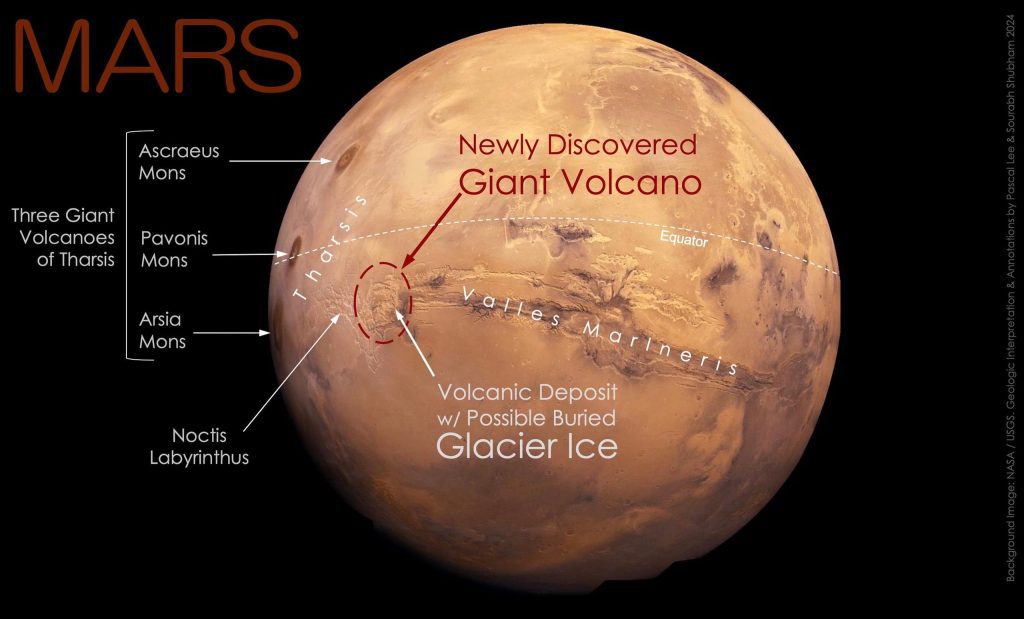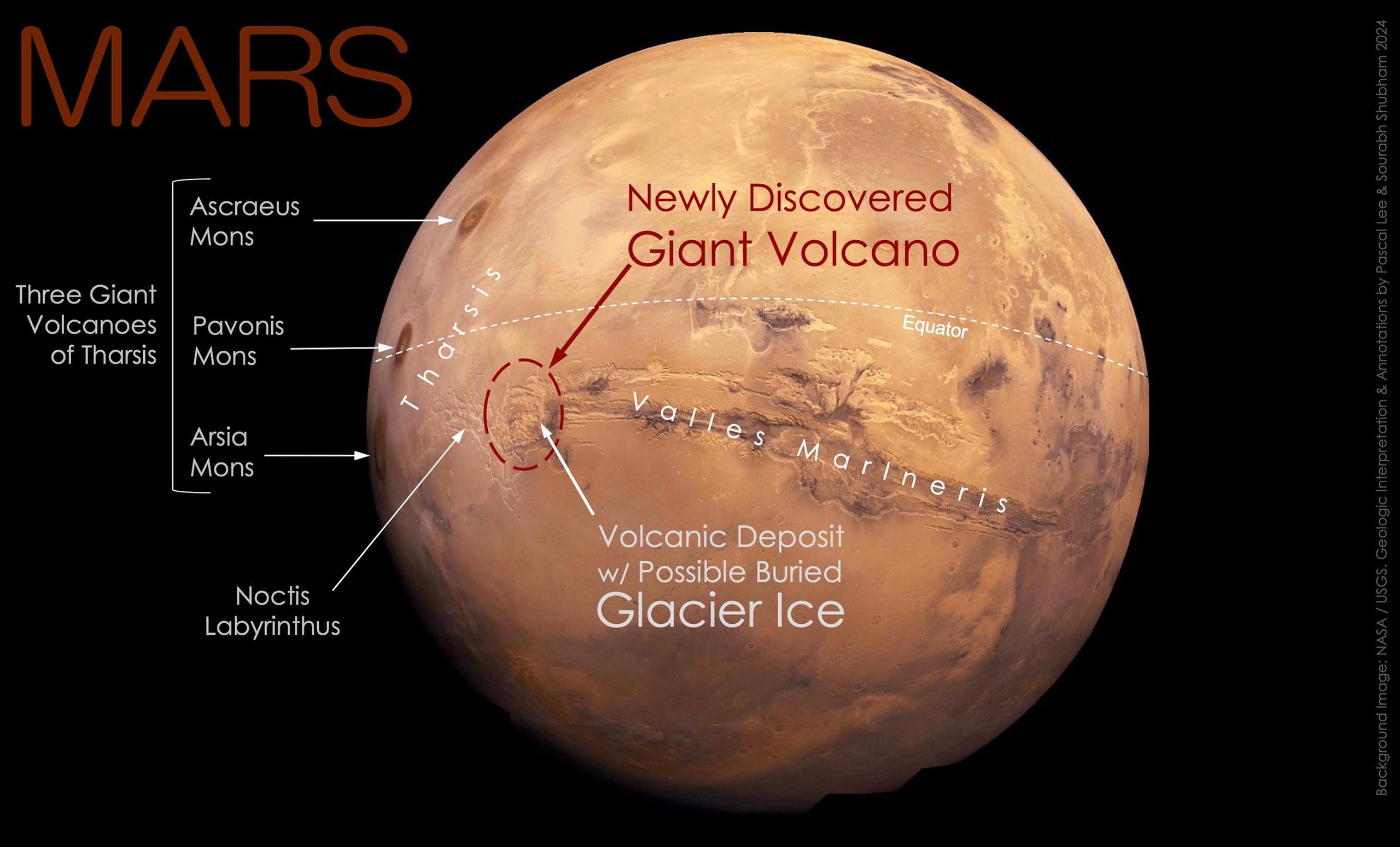
Our knowledge of Mars has greatly improved since the Viking missions landed in the 1970s. Since then, over 18 spacecraft have operated in Mars’ orbit, seven of which are still active. Numerous rovers have crossed the uncultivated land, uncovering valuable discoveries. planet’s With all these eyes above and on the ground, you’d think something as massive as a mountain would have been mapped out by now. But Mars is always full of surprises.
Even with numerous spacecraft and rovers, one might expect that something as large as a mountain would have been fully explored by now. However, Mars continues to reveal unexpected findings.
Scientists have identified a new volcano on Mars, temporarily named Noctis Mons (or Noctiv Volcano), located south of the planet’s equator in the Eastern Noctis Labyrinthus region. This giant structure is incredibly massive, measuring 9,022 meters (30,000 feet) in height and spanning 450 kilometers (about 280 miles).
“We were examining the geology of an area where we had found the remains of a glacier last year when we realized we were inside a huge and deeply eroded volcano,” said Dr. Pascal Lee, a planetary scientist with the SETI Institute and the Mars Institute based at NASA Ames Research Center.
A massive entity that was well hidden
While it’s now dormant, Mars had a significant history of volcanic activity. The assumption is that, since it’s smaller than Earth, the planet would have cooled faster than ours after it formed. As its thermal activity decreased, so did its ability to generate new volcanoes and so-called “marsquakes”. More recently, scientists have found that there is still some volcanic activity that makes some regions prone to mild tremors. Still, these are nothing as intense as what it used to experience billions of years ago.
Given the immense size and deeply eroded features of Noctis Mons, it must be very old, a landmark of a bygone era. But when it was active, it must have caused quite the stir.
Noctis Mons is located on the eastern part of the fractured maze-like geological formation known as Noctis Labyrinthus. The reason it wasn’t identified sooner, despite numerous satellite flybys, is due to the deep erosion it has undergone over millions of years.
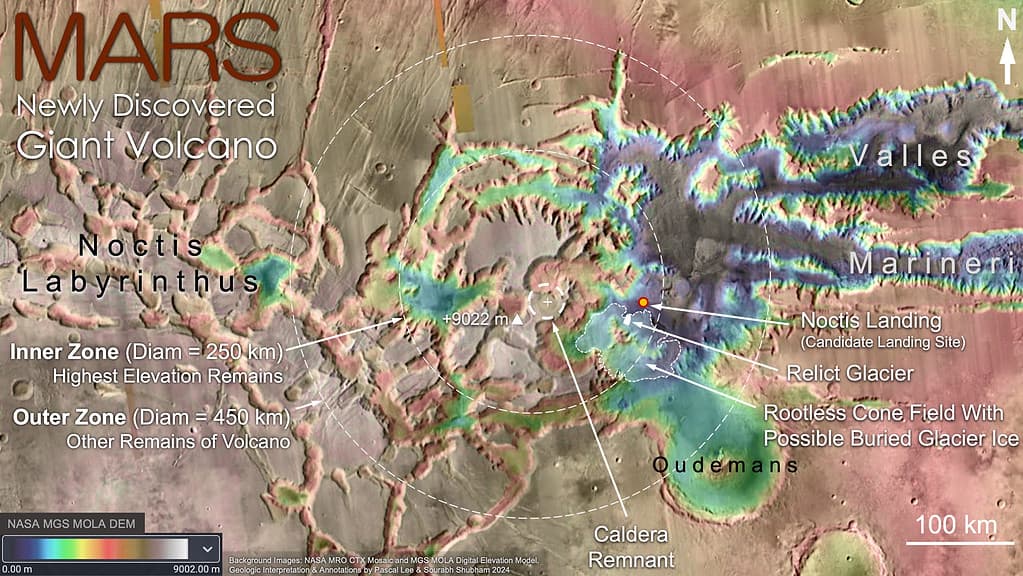
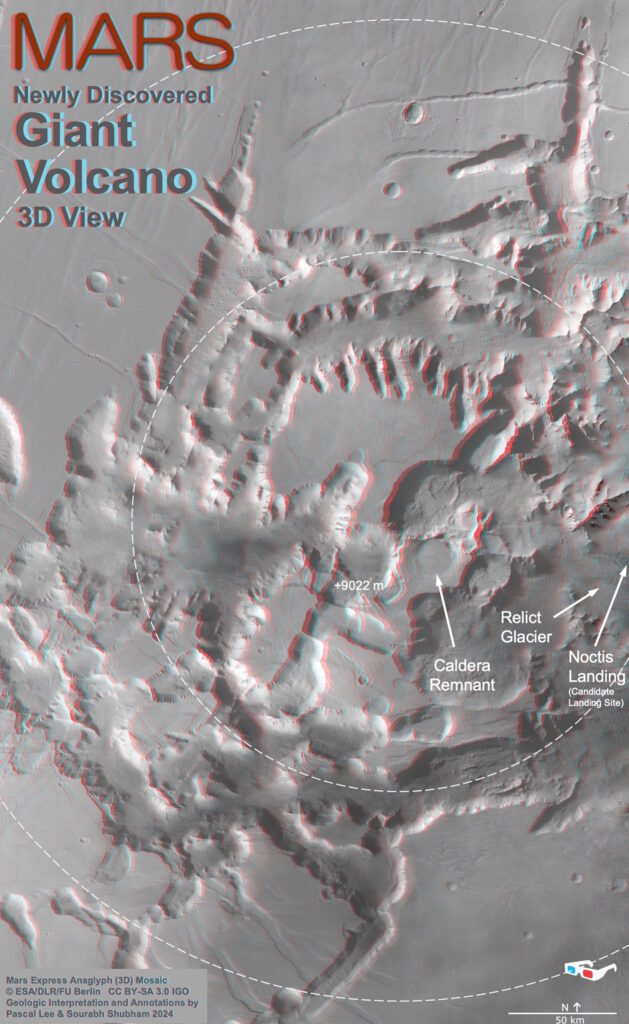
The eastern section of Noctis Labyrinthus is characterized by a disordered mixture of layered flat-topped hills (mesas) and valleys — important clues that initially directed scientists toward investigating its volcanic origin. In the center of this area, a group of elevated mesas forms a semicircle, creating the highest point in the region. These mesas and valleys extend outward for up to 225 kilometers (140 miles), sloping away in various directions. Near the center, there is a caldera remnant, the remains of a volcanic crater that collapsed after hosting a lava lake. Throughout this area, evidence of past volcanic activity, including lava flows, layers of volcanic debris (like ash, cinders, pumice, and tephra), and locations where minerals formed in the presence of water, can be found.
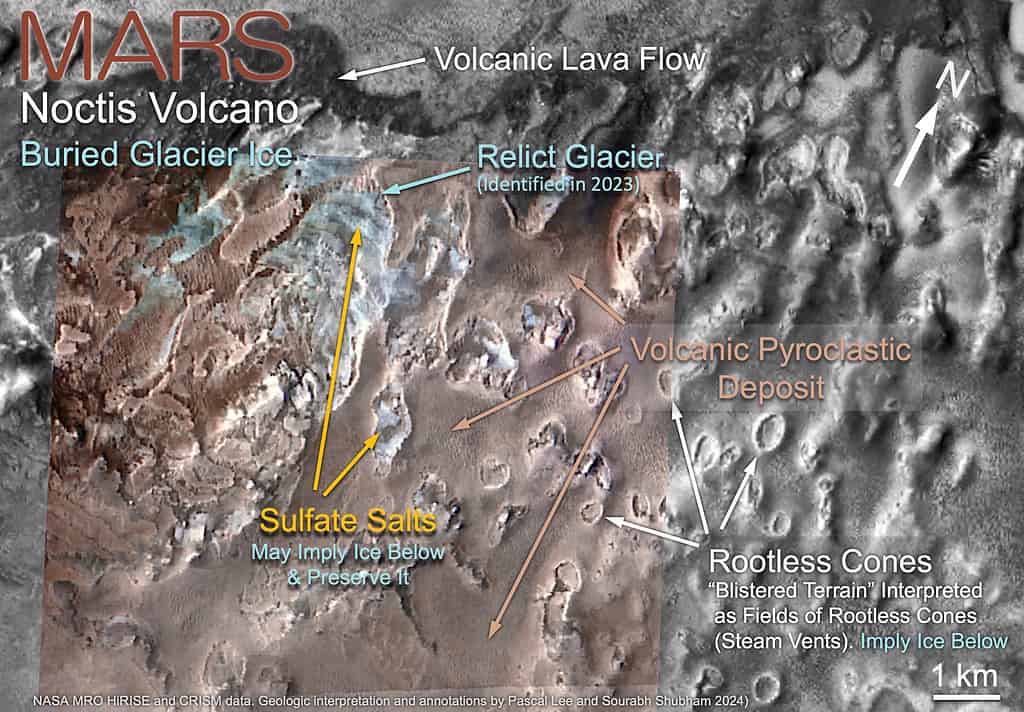
“This area of Mars is known to have a wide variety of hydrated minerals spanning a long stretch of Martian history. A volcanic setting for these minerals had long been suspected. So, it may not be too surprising to find a volcano here,” explained Sourabh Shubham, a graduate student at the University of Maryland’s Department of Geology and the study’s co-author.
“In some sense, this large volcano is a long-sought ‘smoking gun’”.
Volcanoes and ice formations
That's not it. Inside the boundaries of Noctis Mons, there is a large area filled with volcanic deposits, covering 5,000 square kilometers (1,930 square miles). This region has many low, round, and stretched mounds that look like blisters, which scientists call “rootless cones.” Scientists think that these mounds might have been formed by explosions of steam or the expansion of steam when a thin layer of hot volcanic material settled on a surface with a lot of water or ice.
Before, Lee had discovered the well-preserved remains of a glacier, known as a “relict glacier,” within the same volcanic area. This glacier was identified by a deposit of light-colored sulfate salts. These probably formed from the chemical reaction between volcanic material and ice. Gaps in rootless cones also had polyhydrated sulfates, indicating that the volcanic layer might hide a substantial glacier ice sheet underneath.
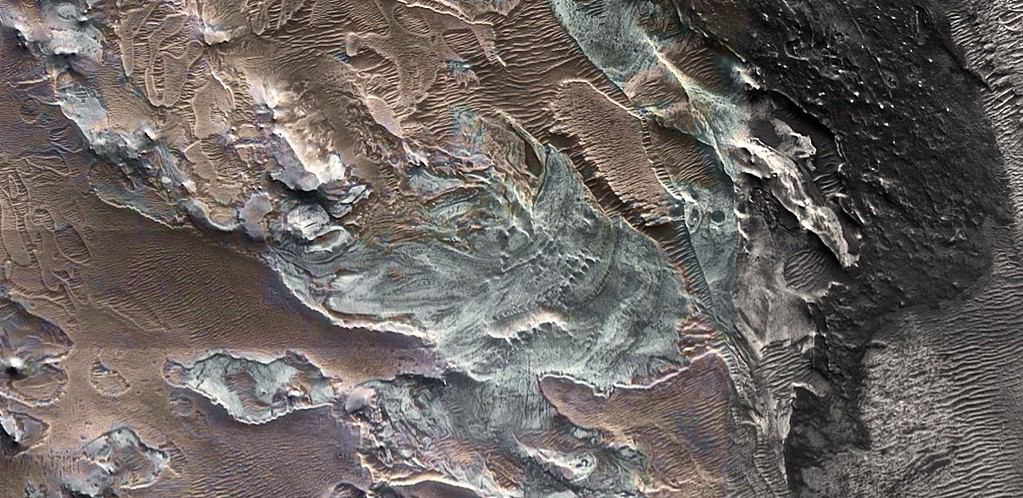
“It’s really a combination of things that makes the Noctis volcano site exceptionally exciting. It’s an ancient and long-lived volcano so deeply eroded that you could hike, drive, or fly through it to examine, sample, and date different parts of its interior to study Mars’ evolution through time. It has also had a long history of heat interacting with water and ice, which makes it a prime location for astrobiology and our search for signs of life. Finally, with glacier ice likely still preserved near the surface in a relatively warm equatorial region on Mars, the place is looking very attractive for robotic and human exploration,” said Lee.
The strong interaction of heat with water and ice over time raises questions about the potential for life at this site. Thus, the discovery of the Noctis volcano provides a new and interesting place to study Mars’ geological evolution, search for life, and plan future exploration, especially due to the possible existence of glacier ice in a relatively warm equatorial area. Maybe this place could be suitable for human settlements if its water resources are plentiful, confirmed and easily accessible.
“We now have to determine if, and how much, water ice might actually be present in this relict glacier, and whether other light-toned deposits might also have, or have had, ice-rich substrates,” Lee said in a statement.
Was this useful?
Related Posts
- Finally, some good news: warm weather appears to slow coronavirus spread
- World’s deepest point on land found hidden in Antarctica
- The Arctic Ocean is blooming with algae as the ice sheet melts
- Social media require ‘Community Relations 2.0’





